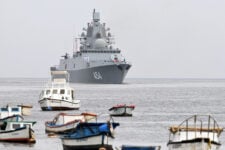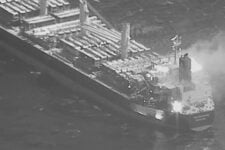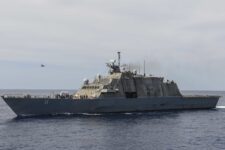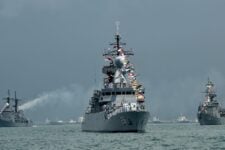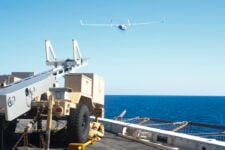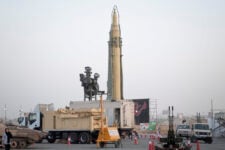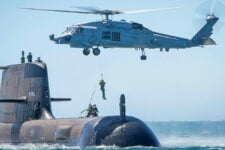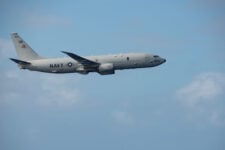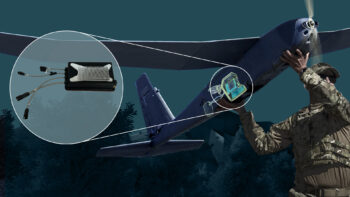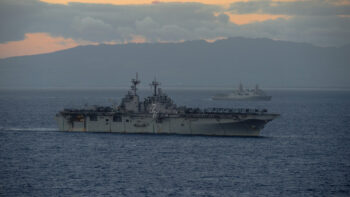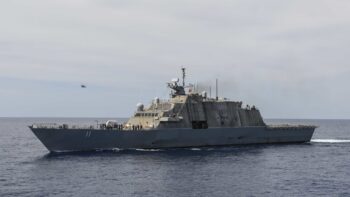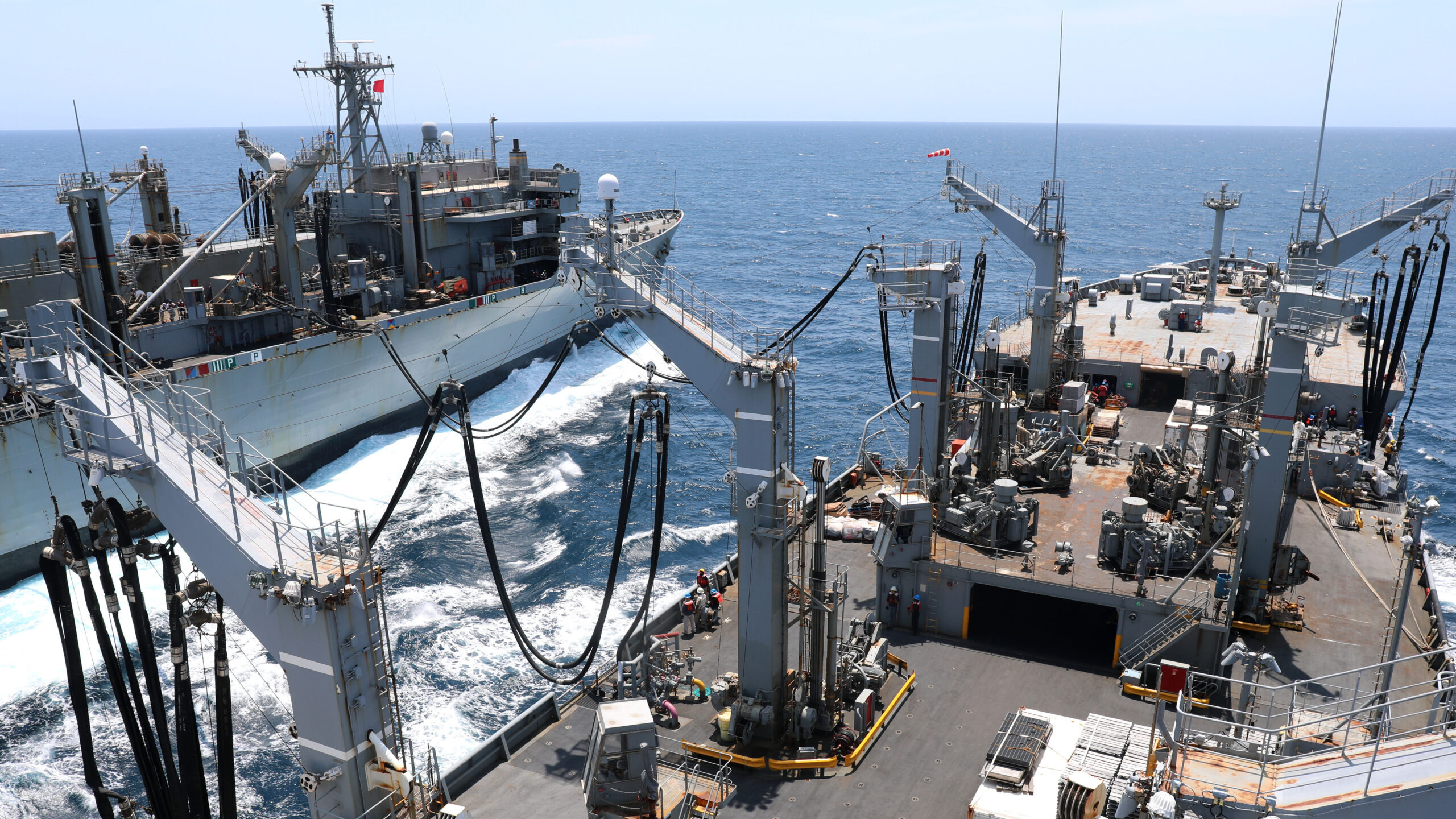
Military Sealift Command’s fleet replenishment oiler USNS Joshua Humphreys (T-AO 188) sends fuel to MSC’s fast combat support ship USNS Arctic (T-AOE 8) during an underway replenishment at sea in the Atlantic Ocean, July 17. (U.S. Navy photo by Bill Mesta/released)
WASHINGTON — The Transportation Department has successfully recruited nine ships, owned by three different companies, to enroll in a new, congressionally backed initiative aimed at providing the Pentagon with a much-needed sealift capacity boost in times of conflict.
“Today we are announcing the first ships to join the Tanker Security Program, which will help strengthen both our supply chains and our national security by delivering fuel to our armed forces around the world while creating hundreds of good jobs for American mariners,” said Transportation Secretary Pete Buttigieg in a July 25 statement.
Under the program, the government can use the ships for international commerce as well as calling on them to support military requirements if the need arises. In exchange for access to the vessels, the companies receive a $6 million per year per ship stipend.
Four of the vessels have begun operating while the other five are working with the government to prepare for operations under the program, the statement added.
The three companies each contributing three vessels to the program are Overseas Shipholding Group (OSG), based in Tampa, Fla.; Seabulk Tankers, based in Fort Lauderdale, Fla.; and a joint venture between Jacksonville, Fla.,-based Crowley and the American arm of the international firm Stena Bulk.
“Crowley appreciates the U.S. government and military’s continued trust in our capabilities to serve the nation’s needs. Crowley’s team with Stena Bulk offers government customers a deep, full suite of capabilities to maintain an efficient, dependable supply chain with management that adds value by being able to meet needs quickly and innovatively,” said Gavin Hughes, vice president of Crowley Government Solutions, in a statement.
Sam Norton, president and CEO of Overseas Shipholding Group, told Breaking Defense in a statement today his company has signed operating agreements with MARAD for three vessels to enter into the TSP.
“Recognition of the key role played by domestic tanker operators in supporting the maritime logistical requirements of the country’s defense strategies is a welcome vote of confidence in both OSG and in the industry as a whole,” he said. “With this initial step towards expanding the fleet of internationally trading US flagged tankers, we look forward to further opportunities for growth in the context of the Tanker Security Program as well as in other supporting roles tied to our national security.”
A request for comment from Breaking Defense sent to Seabulk was not immediately returned.
The Maritime Administration, the government agency housed within the Transportation Department that oversees civilian shipping, said the program “will ensure the Department of Defense has assured access to critically needed product tankers capable of loading, transporting, and storing on-station bulk petroleum refined products to support national economic security.”
Maritime Administrator Ann Phillips added that, “implementation of the TSP is a significant milestone for MARAD and the U.S. maritime industry.”
The Tanker Security Program was created by lawmakers in the Fiscal Year 2021 National Defense Authorization Act.
Evidently, the program has a big supporter within the military: Gen. Jacqueline Van Ovost, commander of US Transportation Command, who said in June her command is working with lawmakers to expand the overall capacity of the program to recruit 10 additional vessels.
“We are concerned about fuel tanker vessels and not having enough US-flagged vessels to meet our requirements,” she said during a Brookings Institute event at the time. “We’re working on the next 10 as well to be able to assuredly move fuel inside the first and second island chain” stretching west of Guam to international waters off China, where shallow drafts prevent access for vessels already available to the command.
Rep. Joe Courtney, D-Conn., an early congressional supporter of the effort, told Breaking Defense today that DOT’s announcement is “welcomed news.”
“The launch of this fleet originated from the bipartisan efforts of the [House] Seapower and Projection Forces Subcommittee that authorized this needed sealift program in 2021,” he said. “These first nine ships will prove essential to our military readiness, particularly in the Indo-Pacific as the Navy transitions away from the Red Hill fuel facility in Hawaii.”

